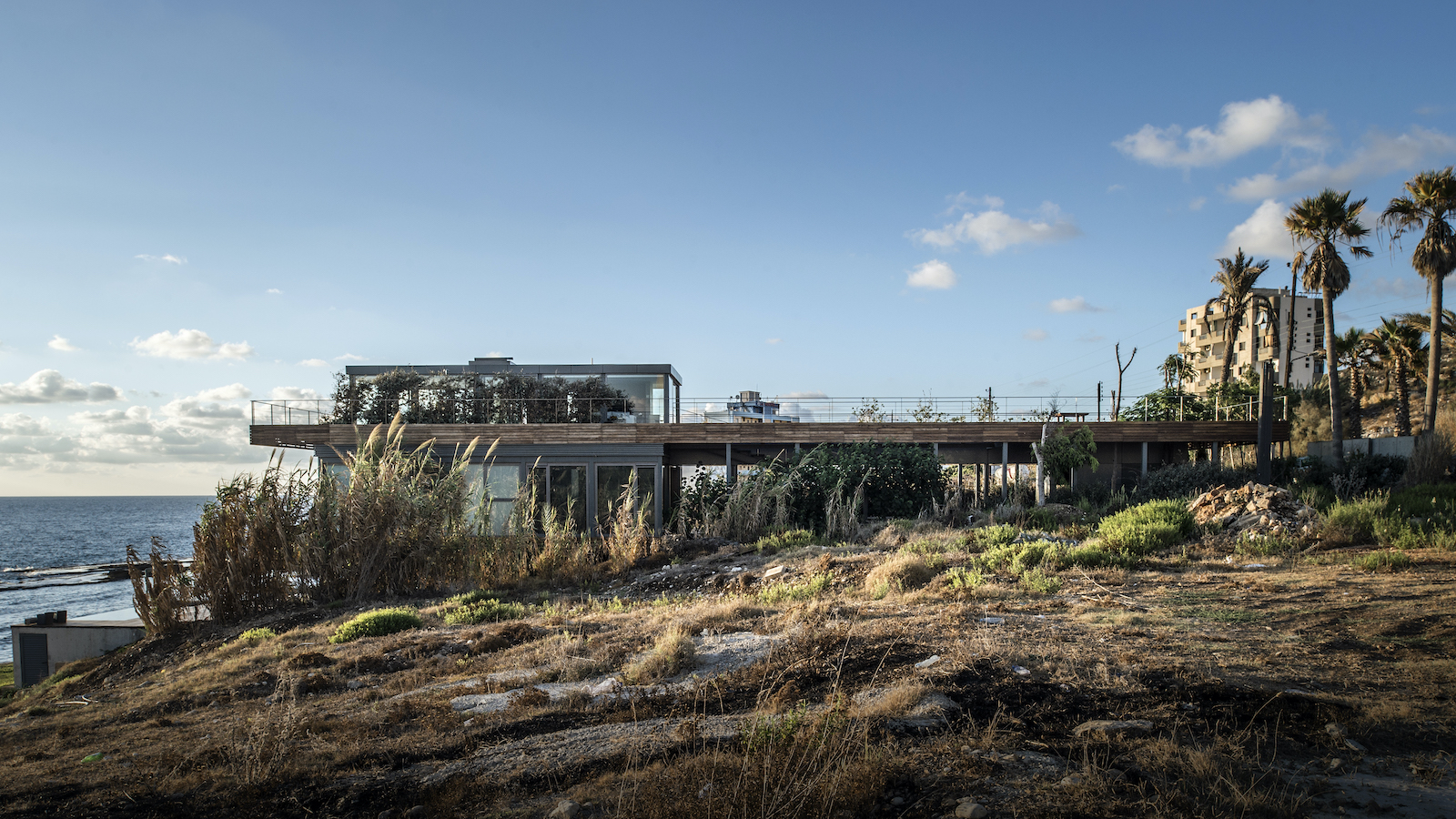PARIS: In the aftermath of the devastating double explosion at the Port of Beirut in August, Lebanese architect Karim Nader was commissioned by the Swiss Agency for Development and Cooperation (SDC) to rehabilitate 10 public schools in Lebanon.
Nader is an interesting man. Aside from his day job, he’s also an ardent yoga practitioner and has just published a book — or rather two books in one, given the dual format of “For a Novel Architecture, cine-roman 2000-2020” — that he considers a “cinematic novel,” perhaps making him a filmmaker too.
There is no chronology in this unusual publication in which Nader has collected the main projects from his 20-year career. He sees it, he has said, as “The romantic nostalgia for a long-gone past, or the fetishistic celebration (mostly technological) of the unknown future.”

Aside from his day job, he’s also an ardent yoga practitioner and has just published a book. (Supplied)
It is also a way for him to better define his philosophy, aesthetics and imagination, and to pay tribute to the important names that have helped him become who he is today — disparate influences from popular culture including “Trois Couleurs: Bleu” by Kieslowski; “Le Petit Prince” by Saint-Exupery; Alain Robbe-Grillet; and Lao Tzu. There is an overlap between the need for nature, the art of “la reprise” (in the sense of restoring something that has come undone or picking up a story that has ended inadequately), and kinetic architecture with its overload of illusions.
The text is printed separately and inserted into the large picture album without captions. The paper, Nader says, is reminiscent of Editions de Minuit — a Parisian publishing house created under the German occupation that, in its quest for unusual literature, has become the benchmark of the Nouveau Roman. It allowed him to discover Robbe-Grillet whose final work, 2001’s “La Reprise,” echoes many of Nader’s own ideas. Each chapter in it begins with the awakening of the main character — or his double — and the story seems to unfold in the confusion of a dream endlessly repeated, escaping any kind of linearity: just like architecture, according to Nader, which he sees as a story with no end and no beginning, which the subject can modify as they wish, according to their own framework.

The “greyish dawn” is the architect’s favorite color, he says. (Supplied)
If he could pick one person as a client, Nader says, he would choose Robbe-Grillet and would create for him a variation of a ruined building, which he would transform in such a way as to make it livable without mending its original scars.
He would probably also add the luminous gray that surfaces at the end of “La Reprise” and that Nader evokes in his own work: “Absence, forgetfulness, and expectation are calmly immersed in a kind of luminous grayness, just like like the translucent mists of an upcoming dawn.” The “greyish dawn” is the architect’s favorite color, he says.
Another important element for Nader, besides his cultural influences, is yoga, which he has been practicing daily since 2003. It gives him, he says, “a certain clarity of mind,” allowing him to make informed decisions, and to develop an intuitive vision of his projects.

The SDC wanted him to restore 10 public schools in the western area of Beirut. (Supplied)
“Most often, our basic intuition is the right one,” he adds. “Once we have absorbed a situation, both on a geographical and humane aspect, we can then distinguish the emotional directions, which, in turn, will suggest a project that we will try to translate into space.”
The SDC contacted Nader the day after the Beirut Port blasts. Studio Karim Nader had previously restored a damaged school in Naqoura in 2015 at the request of the NGO Bahr Lubnan. But the SDC wanted him to restore 10 public schools in the western area of Beirut, part of a quick emergency plan made in coordination with the Lebanese Ministry of Education and Higher Education. “We share the same culture,” the SDC told him.
Nader and his team undertook a detailed assessment of the damage, including any structural or functional flaws, for each building. The studio was also in charge of the tender process, including the evaluation of suitable contractors, and of the execution of the work. The schools were classified into two groups: those located in traditional structures — some dating back as far as the late 19th century — and others occupying more-modern structures from the 1950s onwards.

Studio Karim Nader had previously restored a damaged school in Naqoura in 2015 at the request of the NGO Bahr Lubnan. (Supplied)
“Each school humbly reflects the time in which it was built. In order to preserve these qualities, the work undertaken in traditional buildings included the restoration of specific architectural elements such as triple-arch windows or decorative wooden elements,” Nader explains.
“Some of the (more-modern) schools have given us the opportunity for programmatic improvements,” he continues. “For example, in one school in Zoqaq el Blat, whose structure belongs to one of the oldest families in Beirut, the studio had the chance to transform the unused roof into a multifunctional space by renovating two rooms and transforming them into an arts-and-crafts space which will give the school the opportunity to expand its curriculum and involve students in creative work. Another area on the roof terrace has been equipped to be turned into a greenhouse.”
At their own level, these interventions illustrate how architecture, as conceived by Nader, can impact the lives of buildings’ residents. Maybe through a diversification of school activities, new vocations can emerge. In that “maybe” lies the potential of this work, Nader says, “to provide the (chance) to live poetically, humanly and naturally.”







0 التعليقات:
إرسال تعليق